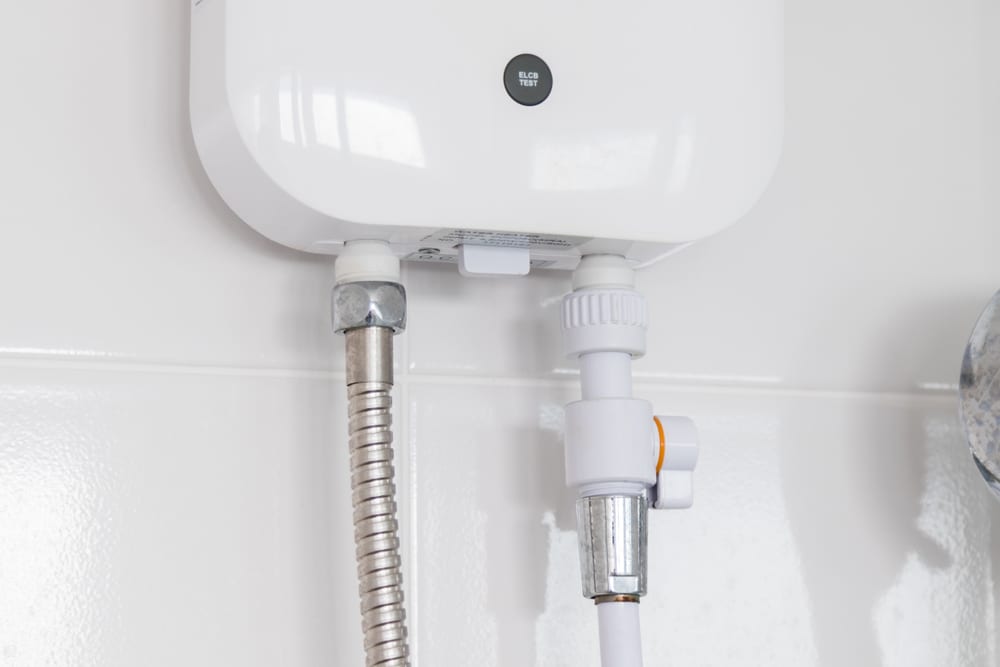
A tankless water heater heats water as and when you need it. Instead of heating water that is stored in the tank, which consumes more energy, a tankless water heater heats water as it flows through the tank. This saves energy and you save significantly on your utility bills as you’re not heating any more water than is strictly necessary. It is also called an on demand water heater or an instant water heater, meaning that the instant you turn it on by opening the tap you get hot water.
Tankless Water Heater Saves Energy
The single major advantage of this kind of water heater is that it saves energy. However, it might be limited in the kind of water flow it produces. As the tankless water heater heats the water as it flows along, the volume of hot water output is limited. Thus if you are looking for a forceful jet of water that comes at high volumes, you might be disappointed. Since the maximum output for most tankless heaters tops off at around 5 gallons per minute, using the same heater for multiple outlets simultaneously is almost always out of the question. You cannot use a dish washer and have a hot shower at the same time. Of course, this limitation can be avoided by using multiple water heaters for each appliance and outlet separately.
Homes that typically use an average amount of around 40 gallons per day, upon switching to a comprehensive demand water heating system, benefit from a cut in energy expenditures (for heating water) by more than a quarter of the original amount. The exact figures may vary, but in the average house, this means savings of up to $100 a year alone. This unprecedented level of efficiency makes upgrading to a tankless water heater system a no-brainer for your home. Although the initial installation costs for the tankless heaters are higher than conventional water heating systems, you will find that the former is a lot more long lasting in comparison, with an expected life of close to 20 years. This is twice of what is normally expected from the conventional types. When this fact is taken into consideration, along with its superior efficiency, it ensures that in the long run you will save enough to offset the higher initial costs.
There are two main types of tankless water heaters depending on the heating method employed – Electric water heaters use a filament that has current passing through it to heat water as it passes through, and Gas-fired heaters use a pilot light that heats the tubes the water flows in. Though the electric tankless heater has a lower volume outflow, it is sometimes more efficient than its gas-powered counterparts which have a constant pilot light. If that is the case, the amount of gas that is used by the pilot light can negate the energy costs that are saved by the tankless design.
To avoid this particular pitfall, you can invest in an IID – Intermittent Ignition Device. It is a small piece of machinery that acts like a spark plug in a car and removes the need for a constant pilot light. When the faucet is turned on the IID ignites the pilot light which heats the water. When it is turned back off, the gas supply cuts off and the pilot light is extinguished. Thus you can have a decent volume of outflow as well as reduced gas and energy wastage.
It is important to carry out a complete analysis of your average water usage, local climates, potential fuel sources, building code specifications, and all safety considerations when using a combustible power source like a gas supply line. Only when you do this can you determine what type of water heating system is ideal for installing in your home.
Fenwick Home Services, an expert plumbing services provider, has over 40 years of experience in the Jacksonville area. Bill Sr. started Fenwick Home Services in 1969 to bring better standards to the plumbing services industry. He changed the industry from within, by employing only qualified and certified plumbers, and by bringing accountability, certification and other standard measures to the plumbing industry in North Florida. Call us today for your free estimate.

